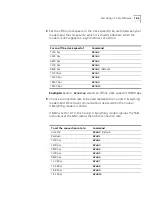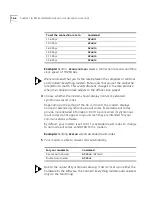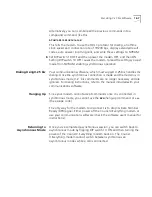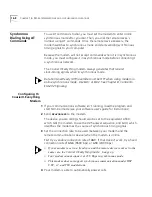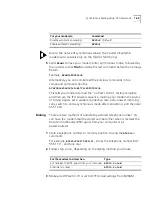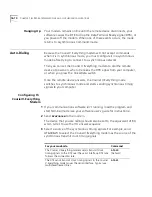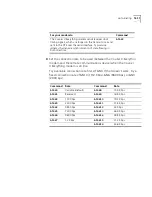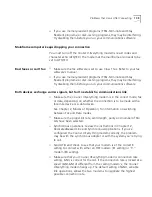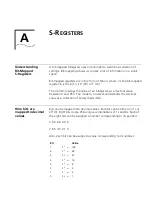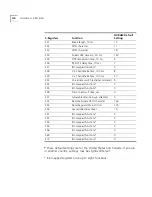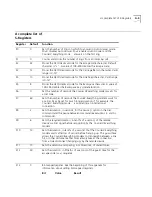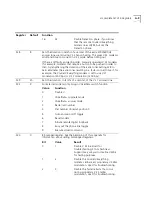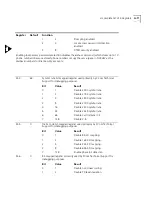
Problems that Occur After Connecting
17-5
■
If you use memory-resident programs (TSRs-Terminate and Stay
Resident programs) or disk-caching programs, they may be interfering.
Try disabling them before you run your communications software
Mainframe computer keeps dropping your connection
You must turn off the Courier V.Everything modem's result codes and
character echo (ATQ1E0). The modem at the mainframe also needs to be
set to ATQ1E0.
Bad faxes or can't fax
■
Make sure the fax software is set to use Class 1 fax. Refer to your fax
software's manual.
■
If you use memory-resident programs (TSRs-Terminate and Stay
Resident programs) or disk-caching programs, they may be interfering.
Try disabling them before you run your communications software
Both devices exchange carrier signals, but fail to establish a communications link
■
Make sure the Courier V.Everything modem is in the correct mode, fax
or data, depending on whether the connection is to be made with a
facsimile device or a data device.
See Chapter 2, Modes of Operation, for information on switching
between Fax and Data modes.
■
Make sure the proper bit rate, word length, parity and number of Sto
bits have been selected.
■
Synchronous operations: review the instructions in Chapter 12,
Dedicated/Leased Line and Synchronous Applications. If you've
configured the Courier V.Everything modem correctly, the problem
may be with the synchronous adapter or with the system you're trying
to call.
■
Send ATI4 and check to see that your modem is at the correct B
setting to connect with either an HST modem (B1 setting) or “V.”
modem (B0 setting).
■
Make sure that your Courier V.Everything modem's connection rate
setting, &Nn, is correct for the call. If the connection rate is locked at a
speed (&N1-&N14) different from the calling modem's, the Courier
V.Everything modem hangs up. The default setting of &N0, variable
link operations, allows the two modems to negotiate the highest
possible connection rate.
Summary of Contents for Courier
Page 12: ......
Page 28: ...1 14 CHAPTER 1 CONNECTING TO YOUR ISP ...
Page 36: ...3 4 CHAPTER 3 UPGRADING YOUR MODEM ...
Page 58: ...6 6 CHAPTER 6 WORKING WITH MEMORY ...
Page 64: ...8 4 CHAPTER 8 CONTROLLING EIA 232 SIGNALING ...
Page 72: ...9 8 CHAPTER 9 ACCESSING AND CONFIGURING THE COURIER V EVERYTHING MODEM REMOTELY ...
Page 80: ...10 8 CHAPTER 10 CONTROLLING DATA RATES ...
Page 96: ...12 6 CHAPTER 12 FLOW CONTROL ...
Page 108: ...13 12 CHAPTER 13 HANDSHAKING ERROR CONTROL DATA COMPRESSION AND THROUGHPUT ...
Page 112: ...14 4 CHAPTER 14 DISPLAYING QUERYING AND HELP SCREENS ...
Page 122: ...15 10 CHAPTER 15 TESTING THE CONNECTION ...
Page 142: ...17 8 CHAPTER 17 TROUBLESHOOTING ...
Page 156: ...A 14 APPENDIX A S REGISTERS ...
Page 172: ...B 16 APPENDIX B ALPHABETIC COMMAND SUMMARY ...
Page 178: ...C 6 APPENDIX C FLOW CONTROL TEMPLATE ...
Page 186: ...E 4 APPENDIX E V 25 BIS REFERENCE ...



